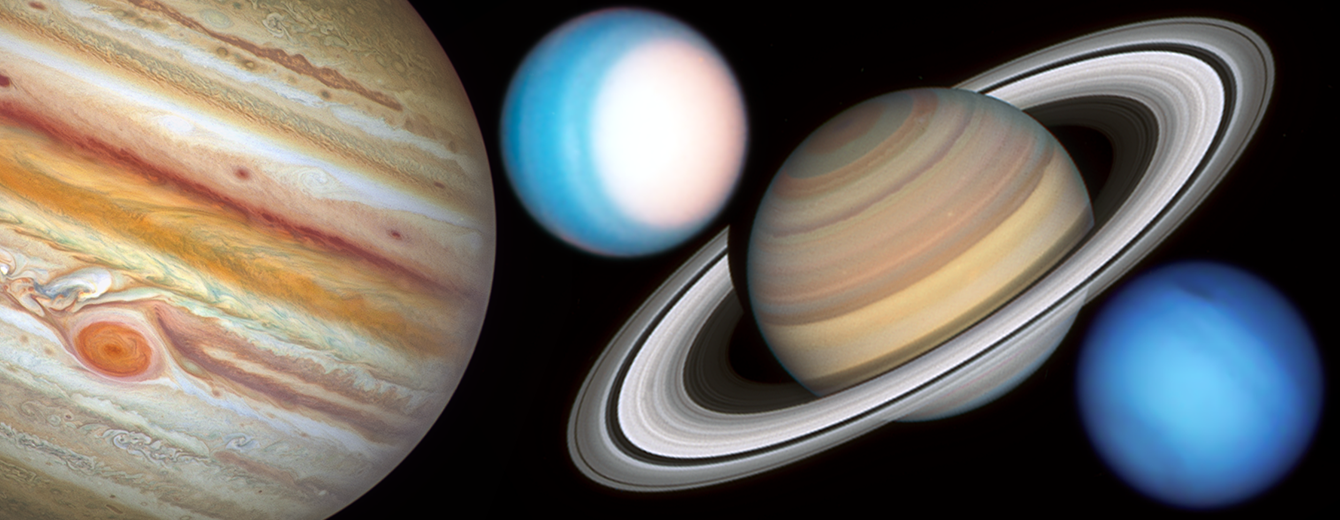In 1992, Hubble was the first telescope to resolve protoplanetary disks (dubbed “proplyds”) around stars in the Orion Nebula. Hubble’s high resolution and sensitivity, along with the Orion Nebula’s proximity, have allowed the telescope to image proplyds around nearly 200 stars in the nebula. Proplyds are pancake-like disks of mostly gas and some dust surrounding a young star. They are a prerequisite for the formation of planetary systems.

Hubble has also done the largest and most sensitive visible-light imaging survey of debris disks around stars. Two particular stars highlight Hubble’s observations: TW Hydrae, and Beta Pictoris.
Using a mask to block the star’s bright light, Hubble scientists spotted a mysterious gap in a vast protoplanetary disk of gas and dust swirling around the star TW Hydrae. The gap is likely the result of a growing, unseen planet gravitationally sweeping up material and carving out a lane in the disk like a snowplow. The 1.9 billion-mile-wide gap isn’t completely cleared of material yet.

More recently, astronomers using Hubble noticed a change in brightness with position of TW Hydrae's disk. Because Hubble has 18 years' worth of observations of the star, the astronomers could assemble a time-lapse movie of the shadow's rotation. They think an unseen planet in the disk is gravitationally pulling on material near the star and warping the inner part of the disk. The twisted, misaligned inner disk is casting its shadow across the surface of the outer disk.

Hubble researchers also studied changes in the planetary disk surrounding Beta Pictoris. By masking out the star’s light, they could detect changes in the material orbiting the star. The results point to a massive planet embedded within the star’s dust disk. Astronomers spotted the planet using the European Southern Observatory.

Hubble’s ultraviolet sensitivities captured radiation falling onto a planet forming around the star PDS 70. Previous observations with ground-based telescopes revealed two massive Jupiter-sized, planets carving out a wide gap within the planetary disk of the star. Located some 370 million light-years away, the young 6-million-year-old star is slightly smaller and less massive than the Sun.

Learn More

Hubble Gets Best View of a Circumstellar Debris Disk Distorted by a Planet
When comparing the latest Hubble images to those taken in 1997, astronomers find that the disk's dust distribution has barely changed over 15 years despite the fact that the entire structure is orbiting the star like a carousel.
Hubble Science Highlights
Discover the breadth and depth of Hubble's exciting discoveries!

Studying the Planets and Moons
Hubble’s systematic observations chart the ever-changing environments of our solar system's planets and their moons.

Tracking Evolution in the Asteroid Belt
These conglomerates of rock and ice may hold clues to the early solar system.

Uncovering Icy Objects in the Kuiper Belt
Hubble’s discoveries helped NASA plan the New Horizon spacecraft’s flyby of Pluto and beyond.

Exploring the Birth of Stars
Seeing ultraviolet, visible, and near-infrared light helps Hubble uncover the mysteries of star formation.

The Death Throes of Stars
When stars die, they throw off their outer layers, creating the clouds that birth new stars.

Recognizing Worlds Beyond Our Sun
Hubble can detect and measure the basic organic components for life on planets orbiting other stars

Seeing Light Echoes
Like ripples on a pond, pulses of light reverberate through cosmic clouds forming echoes of light.

Tracing the Growth of Galaxies
Hubble's Deep Field observations are instrumental in tracing the growth of galaxies.

Galaxy Details and Mergers
Galaxies evolve through gravitational interaction with their neighbors, creating a menagerie of forms.

Monster Black Holes are Everywhere
Supermassive black holes lie at the heart of nearly every galaxy.

Homing in on Cosmic Explosions
Hubble helps astronomers better understand and define some of the largest explosions in the universe.

Discovering the Runaway Universe
Our cosmos is growing, and that expansion rate is accelerating.

Focusing in on Gravitational Lenses
Gravitational lenses are 'Nature's Boost', expanding our view deeper into space and farther back in time.

Shining a Light on Dark Matter
The gravitational pull of dark matter guides the formation of everything we can see in the universe.

Mapping the Cosmic Web
Filaments and sheets of matter create an interconnected web that forms the large-scale structure of the universe.






